|
USAAF flight helmets
As the US Air Corps became the USAAF in June 1941, the nomenclature of flight helmets changed too. When viewing the specification label of early flight helmets, the contract number always has a AC prefix while on the USAAF helmets the label reads Property of the Air Forces, US Army. In the early stage of the war, the USAC was still using the helmets from the 30's. As war went on, the need for more practical helmets increased and the flight helmets improved bit by bit by changing the desgin of the helmet. Also the production method became an important factor for the design of the helmets. Most of the helmets were mass-produced so production had to be quite simple. In 1943 an entirely new ear cushion design was introduced, the Harvard design ear cushions. This was a great improvement for the wearer as the helmet was more comfortable to wear and outside noice was greatly reduced.
With the change of flight helmet patterns, the old earphones (or receivers) had to follow that change. Most early flight helmets used R-14 radio receivers while the helmets post 1943 used ANB-H-1 recievers which fitted perfectly into the Harvard design ear cushions.
The helmets from the old generation were almost always issued without any provision for communication so Gosport tubes and receivers had to be installed by the user. As there was no official pattern for installing the devices, a lot of different methodes were used to fix the recievers to the helmet.
It should be noted that USAAF airmen used a lot of RAF issue flight gear to complete their own flight gear. For example the RAF C Type helmet was a very welcome addition for the flyboys, a lot of USAAF fighter pilots used these helmets with American receivers installed instead of the RAF receivers. Other RAF helmets such as the D Type, E Type and FAA versions of these helmets also saw service within the USAAF.
Early flight helmets
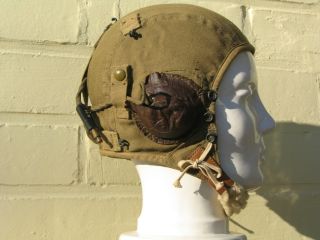  
Left: A-9 summer flight helmet with R-14 recievers held in place by supple ear pockets, 5 hooks are stitched on the helmet for the A-9 and A-10 standard oxygen mask. The press studs are a field modification for attaching a oxygen mask (A-10R, A-10A, A-13, A-14 or A-15)
Middle: A-9 helmet with Gosports installed. This helmet configuration was often used by air cadets for training purposes.
Right: 2 A-9 helmets both field modified with R-14 receivers and extra press studs. Note the difference in ear pockets type, hard vs. soft
 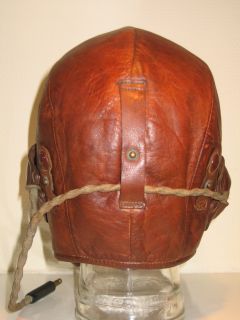 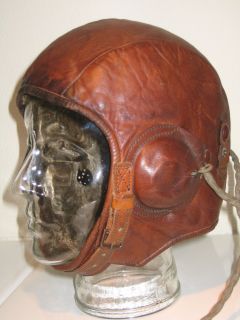
B-4 helmet, this is a 1930's issue flight helmet. This example is fitted with R-14 receivers.
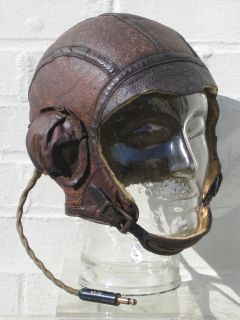 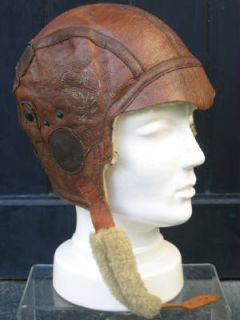 
Left: Early B-5 winter flight helmet with chin cup and R-14 receivers installed.
Middle: Later version of the B-5 helmet with a factory modification; a special cut-out to facilitate the use of an A-9 / A-10 oxygen mask and a chin strap instead of the chin cup.
Right: B-6 flight helmet with snaps added for an oxygen mask. The 2 small studs indicate that there used to be ear pockets sewn on the helmet.
Later flight helmets
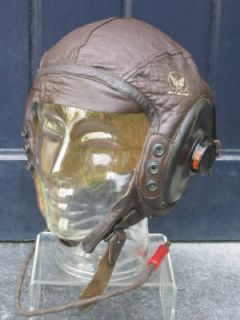  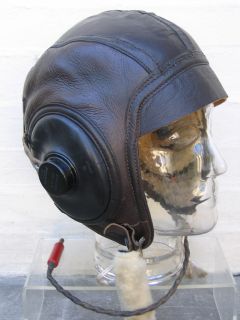 
Far left: A-11 intermediate flight helmet with the Harvard design ear cups with ANB-H-1 receivers installed.
Left : Later A-11 helmet with 4 snaps instead of 3 snaps on the earlier version. Of interest is the oxygen mask clip which is sewn on to the helmet on both sides.
Right: AN-H-16 winter flight helmet with ANB-H-1 receivers.
Far right: Side view of AN-H-16 helmet which replaced the B-6 helmet in 1943.
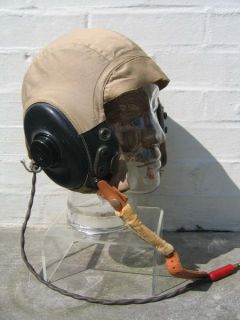 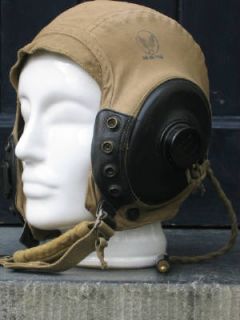  
Left: AN-H-15 summer flight helmet with ANB-H-1 receivers installed. This example has 4 snaps so is a later version.
Middle: A-10A summer flight helmet with ANB-H-1 receivers installed. The A-10A helmet is almost identical to the AN-H-15 helmet and the main difference is the rear goggle straps construction.
Right: The A-10A helmet (left) has cloth goggle straps while the AN-H-15 helmet (right) uses leather goggle straps.
Far right: Early model of the AN-H-15 helmet with oxygen mask snaps placed directly on the helmet without leather reinforcements.
|